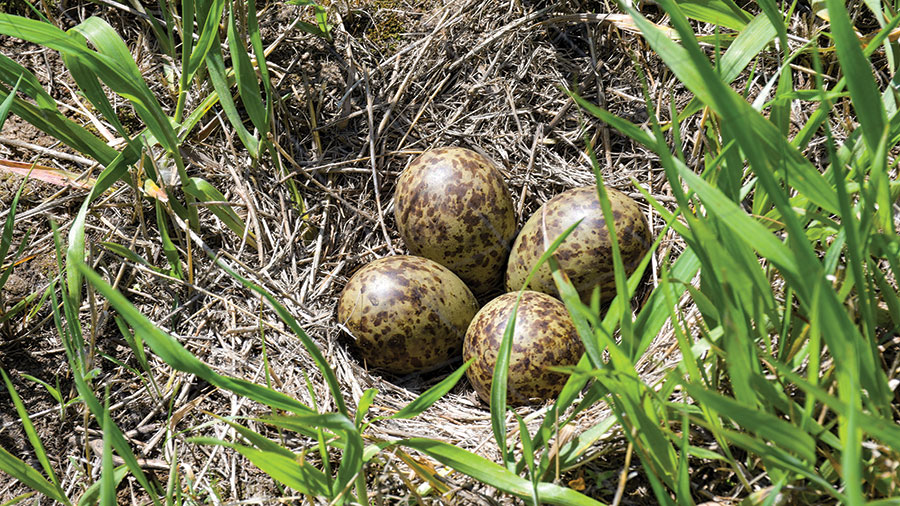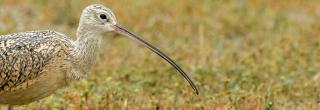A Checkoff for Nongame
Nearly 40 years ago, state lawmakers agreed to the pressing of constituents to establish a way to help conserve North Dakota’s nongame wildlife, which then and today make up the bulk of the state’s fish and wildlife resources.
The result was the Nongame Wildlife Fund, which provided a means for conservationists to support nongame. In addition, it gave the North Dakota Game and Fish Department the ability to create a much-needed program to conserve and manage nongame species.
As it was reported in North Dakota OUTDOORS nearly four decades ago, the focus of the fund hasn’t changed: “In simple terms, the objectives of the fund are to promote hands-on effort to conserve our nongame wildlife; to learn more about our nongame species; to protect and better manage nongame species that are in jeopardy; and to encourage public use and enjoyment of nongame wildlife.”
And like those objectives, the process for citizens to contribute to the fund remain the same. Contributions for supporting wildlife conservation can be made on the Watchable Wildlife checkoff on their state tax form. Contributions are voluntary, no matter if you’re receiving a refund or not.
“When the fund was enacted in 1987 it really allowed us to add to our nongame budget in North Dakota,” said Patrick T. Isakson, Game and Fish Department conservation supervisor. “Since then, we’ve had some other funding sources that have really increased what we can do to research nongame, but in its inception, the Nongame Wildlife Fund was the cream of the crop.”
 Long-billed curlew eggs
Long-billed curlew eggs
Isakson said the tax checkoff has been pretty stable over time in terms of donations, garnering about $20,000 per year.
“It helps quite a bit. With research for nongame species and watchable wildlife as it is, there aren’t a lot of funding sources out there,” he said. “And like I said before, at its inception, the fund was really important because it made up a lot of our nongame budget and we still use it today for some great projects.”
A project of note in the last few years focused on long-billed curlews in southwestern North Dakota where researchers captured and fit a number of male and female curlews with GPS and satellite transmitters to track their movements and to better understand their habitat use in the state and elsewhere.
Also of note, money from the fund was also donated to the development of Clairmont Family Conservation Park in Bismarck, an urban wildlife resource.
“They’ve developed, for instance, walking paths and some interpretive sites to provide an understanding to users of the surrounding wildlife habitat and the nongame species that use it,” Isakson said. “The park makes wildlife and wildlife habitat more accessible in an urban area.”
Isakson said the agency doesn’t spend the roughly $20,000 generated every year.
“Lots of times we will put money away and we can hold it for a certain amount of time and then make a bigger impact on a project, or maybe even pay for a whole project with money built up over a few years,” Isakson said. “The benefit of having the money available is helping out with projects that are underfunded. So, if somebody brings us a project and we’re funding it from a different source, but we can’t quite get over the hump with the money we need, then the nongame fund and nongame tax checkoff money really helps.”
Back in the day, the Department produced a poster from the winning photograph from the Watchable Wildlife Photo Contest to promote the tax checkoff. While the poster is a thing of the past, the photo contest still exists and doesn’t show any sign of slowing.
“I’m always impressed with what people out there are seeing in the outdoors, and it just really shows that there are people out looking for wildlife, not necessarily hunting and fishing,” Isakson said. “Those photos and interactions with wildlife come from time in the field, which is important. Besides the game species that we have in North Dakota, we have hundreds of other species of wildlife, and there are people who enjoy them.
“Here at the Game and Fish, we’re really focused on being in charge of all wildlife in the state and managing all wildlife,” he added. “So, providing opportunities with this money or managing species that people don’t necessarily hunt or fish for is important for the Game and Fish to continue to do.”


